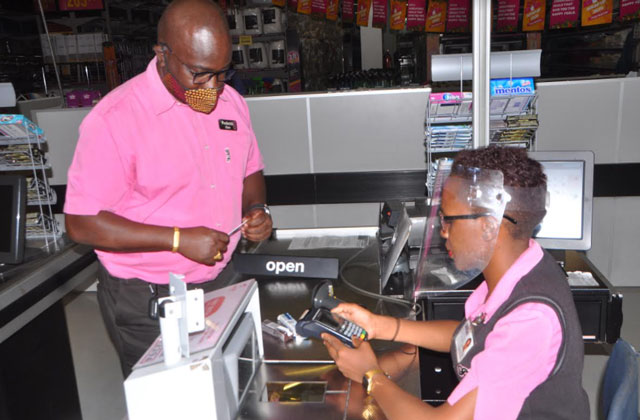
Kampala, Uganda | THE INDEPENDENT | The newly upgraded Stanbic Bank Uganda contactless Visa card that was launched in Kampala today, will make it easier, safer, and faster for customers to transact, and completely remove the need to withdraw or handle cash.
The new card will have the latest technological applications that allows customers to simply ‘tap it’ to complete a low value payment transactions, instead of inserting it into a point-of-sale machine and entering a PIN.
According to a statement from Stanbic, customers who have currently applied for a new card, renewed or replaced their existing cards will receive the contactless Visa cards that will be accepted locally at all merchant outlets accepting contactless payments including retail stores, fast food restaurants, convenience stores and Point of Sales machines globally with a Visa contactless functionality.
Speaking during the launch, Israel Arinaitwe, the Head of Personal Banking at Stanbic said, “the new ‘tap and go’ cards will allow customer’s funds to be deducted directly from a linked bank account, and within the set card limits.”
According to Arinaitwe , the contactless cards are embedded with specialized chip and wireless antenna utilizing ‘Near Field Communication technology’ that enables a seamless payment process with increased security to allow customers keep their card with them rather than handing to the cashiers and having to enter a PIN or sign a slip.

He explained that during this process, the card creates a unique transaction code to make secure payments between a contactless card and a contactless-enabled checkout terminal. The contactless cards will also carry Visa card logo to indicate their contactless capability.
The introduction of this method of payment is intended to make it easier, safer, and faster for customers to transact, Arinaitwe said.
“The cards improve customer convenience, with shorter transaction times and remove the need to withdraw or handle cash. Security is also improved as a customer keeps their card with them rather than handing it to someone else.”
Usually purchase transactions with a PIN often takes around 30 seconds, while for contactless payment it will take about 10 to 15 seconds from start to end. Every purchase is secure, protecting both the data and the account of the customer. However, merchant terminal will not accept two payments in quick concession of each other for the same purchase amount, Arinaitwe explained.
To protect and safeguard the bank customers from fraudulent activities, all contactless cards customers will be provided with a biometric digital ID to use when performing any transactions. “We believe that this the perfect solution to providing an enjoyable customer experience with a high level of security,” he said.
“Stanbic Bank is enabling this payment capability for customers across 15 countries and I am glad to say our customers in these markets are quickly embracing the contactless payment method,” he added.
Further noting, “this is in line with our customers’ increasing preference for solutions that add ease and convenience to their lives. The shift away from cash and towards contactless payment methods has only been accelerated by the pandemic and will continue to grow under the new normal.”
Arinaitwe emphasized that Stanbic bank strives to be at the forefront of new financial innovation and technology to make customers remotely access bank services. “As we adjust to the new normal, the bank is dedicated to providing a comprehensive and seamless customer experience, reduce cash dependency and ultimately increase the adoption of digital payments and transaction platforms.”
Stanbic Bank Uganda is part of the Standard Bank Group, Africa’s largest bank by assets. Standard Bank Group reported total assets R2.3 trillion (about USD163 billion) at 31 December 2019, while its market capitalisation was R277 billion (USD20 billion).
 The Independent Uganda: You get the Truth we Pay the Price
The Independent Uganda: You get the Truth we Pay the Price



